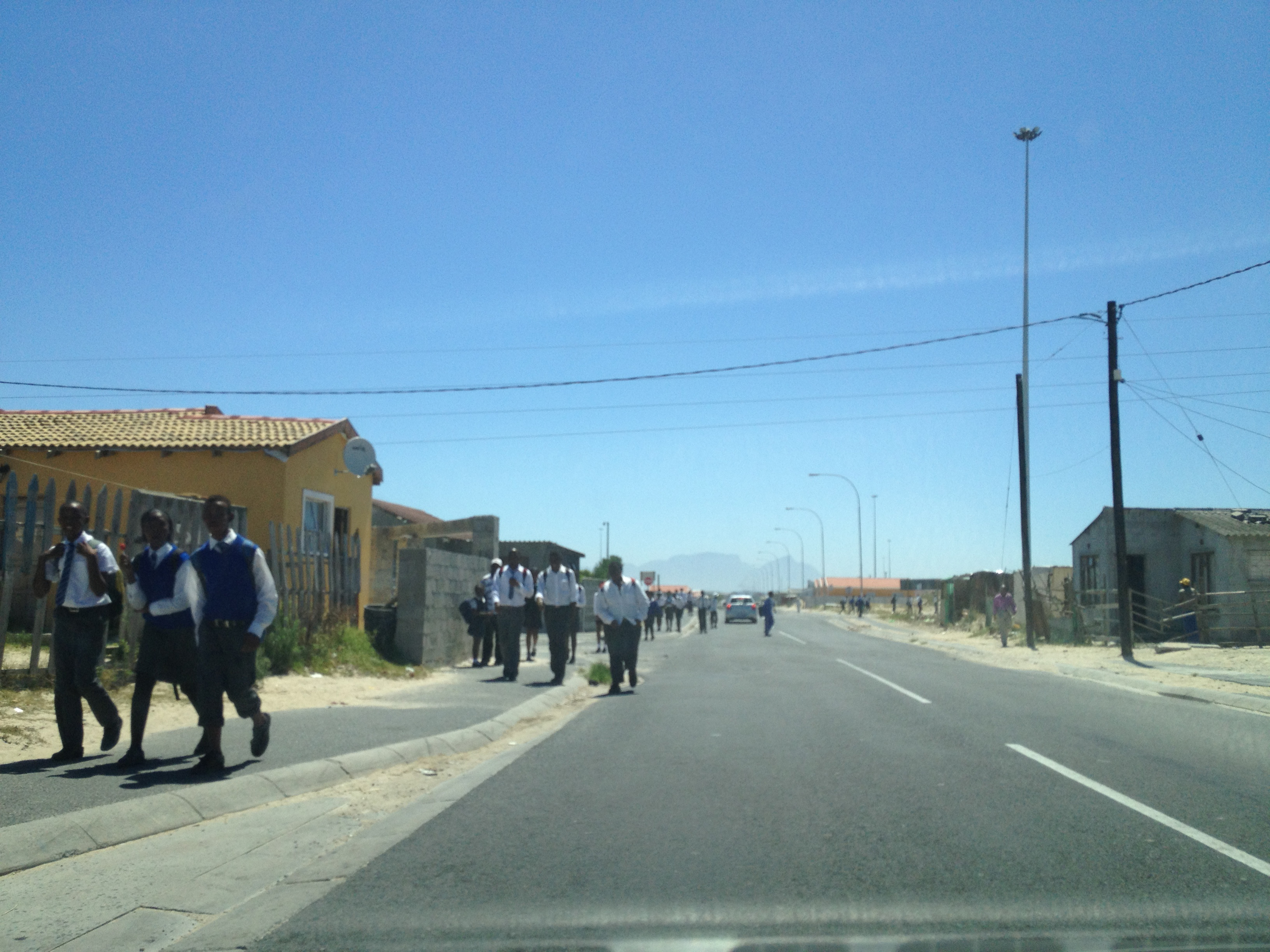Campaign for school infrastructure
During Equal Education’s libraries campaign, the organization repeatedly encountered a harsh reality: many schools were in such bad shape that the lack of a library was not the most pressing need. Of the nation’s 24,793 schools, 2,611, or 11 percent, had an unreliable water supply; 2,402 (10 percent) had no water supply; 3,544 (15 percent) had no electricity; 11,450 (46 percent) had pit latrines; and 913 (4 percent) had no toilet facilities. [25] “Throughout that campaign, we were confronted by the argument that… in terms of the backlogs which we have inherited from apartheid, in terms of the available resources that we have, we need to focus on schools without access to water, electricity and toilets,” says Brockman.
Equal Education also found that there was nothing in the law that required schools to have an adequate physical infrastructure, let alone libraries. “Securing some type of legal requirement would be a good thing for the libraries campaign, but it seems weird to be doing it for libraries when it’s not even required for running water,” says Isaacs.
NPEP. But in 2010, Dmitri Holtzman, an Equal Education researcher and parliamentary liaison officer, came across a recently-published Ministry of Basic Education national policy document. On June 14, 2010, Minister Motshekga had issued a National Policy for an Equitable Provision of an Enabling School Physical Teaching and Learning Environment (NPEP), which stated that norms and standards for school infrastructure would be issued and adopted by March 21, 2011 (fiscal year-end). These norms and standards would establish a legal baseline for school infrastructure and stipulate how everything from water and electricity to libraries would be supplied to all schools across South Africa over a 20-year period. “This would be a set of regulations that would have the force of law, which guidelines do not,” says Brockman. “This is what the [ministry] itself was committing to.”

Students walking home from school.
In response, Equal Education in January 2011 decided to broaden the library campaign to cover all aspects of school infrastructure. They labeled it the Campaign for Norms and Standards for School Infrastructure. “Our initial thought was that we were just going to hold them to their promise to adopt these norms and standards by the end of March 2011,” says Brockman. The campaign’s first step was to publicize Section 5A of the 2007 South Africa Education Laws Amendment Act that called for the ministry to develop binding norms and standards. “We hooked on to that, saying parliament is asking you to do this. Why have you never done it?,” says Isaacs. “That was the point on which our campaign struck repeatedly. Members can even quote the relevant sections of the law.”
Equal Education wrote letters to Minister Motshekga and met with her in Cape Town on February 10. The ministry repeatedly committed to drafting norms and standards, says Brockman. Nevertheless, EE was prepared for it to miss the March 31 deadline. To add pressure, EE organized a massive demonstration and, on March 21, 20,000 students marched to the national parliament building in Cape Town. March 21 was the anniversary of the Sharpeville Massacre, celebrated as Human Rights Day in South Africa.Themarchers presented a memorandum about norms and standards addressed to Motshekga and President Jacob Zuma. [26] The memorandum, read to the crowd by Equaliser Qayisani Dlakani,was a plea to be heard:
We, the majority, sit in over-crowded classrooms, without textbooks, without laboratories and without libraries. Some have air-conditioned classrooms, and laptops on their desks, but we have broken windows, dust, and empty walls. We sit in unsafe buildings and cannot use the blocked toilets. But we know that things can get better.
Nevertheless, Minister Motshekga missed the deadline.
Summit. The March 21 demonstration was an illustration of Equal Education’s growing stature and capability. It capitalized on its increased visibility to organize a national summit, the People’s Summit for Quality Education. The meeting, held June 25-27, 2011 at the University of Cape Town and in Khayelitsha, drew 400 people representing 50 nongovernmental organizations (NGOs) and most of the country’s teachers unions.
Minister Motshekga delivered the opening address, and took the opportunity to respond to the EE norms and standards campaign. She took a combative tone, accusing Equal Education of arrogance and rudeness. She blamed the missed deadline on the requirement that she obtain “concurrence” from provincial education ministers, though the actual legal requirement was to consult, a key distinction well known to the equalisers . Declaring norms and standards “crucial,” she gave credit to the ministry, not EE, for raising public awareness about the condition of the country’s schools."We are the ones who own up first," she said in her speech. "No one tells us; we are the ones who give that information." [27]
Achmat, then Equal Education chair, gave the closing address. Drawing on a proposal made by equalisers at a recent youth group meeting, he announced that, beginning on July 12, EE members planned to sleep outside parliament and remain until the minister issued the school infrastructure regulations which, EE maintained, she had the authority to create unaided. As promised, about 100 Equal Education demonstrators on July 12 set up tents and spent the night outside parliament. Faced with the prospect of arrest for exceeding their one-day permit, they chose to spend only one more night after negotiating with police. The South African media widely covered the action.
[25] NEIMS (National Education Infrastructure Management System) Reports May 2011. See: http://www.education.gov.za/LinkClick.aspx?fileticket=hHaBCAerGXc=&tabid=358&mid=180